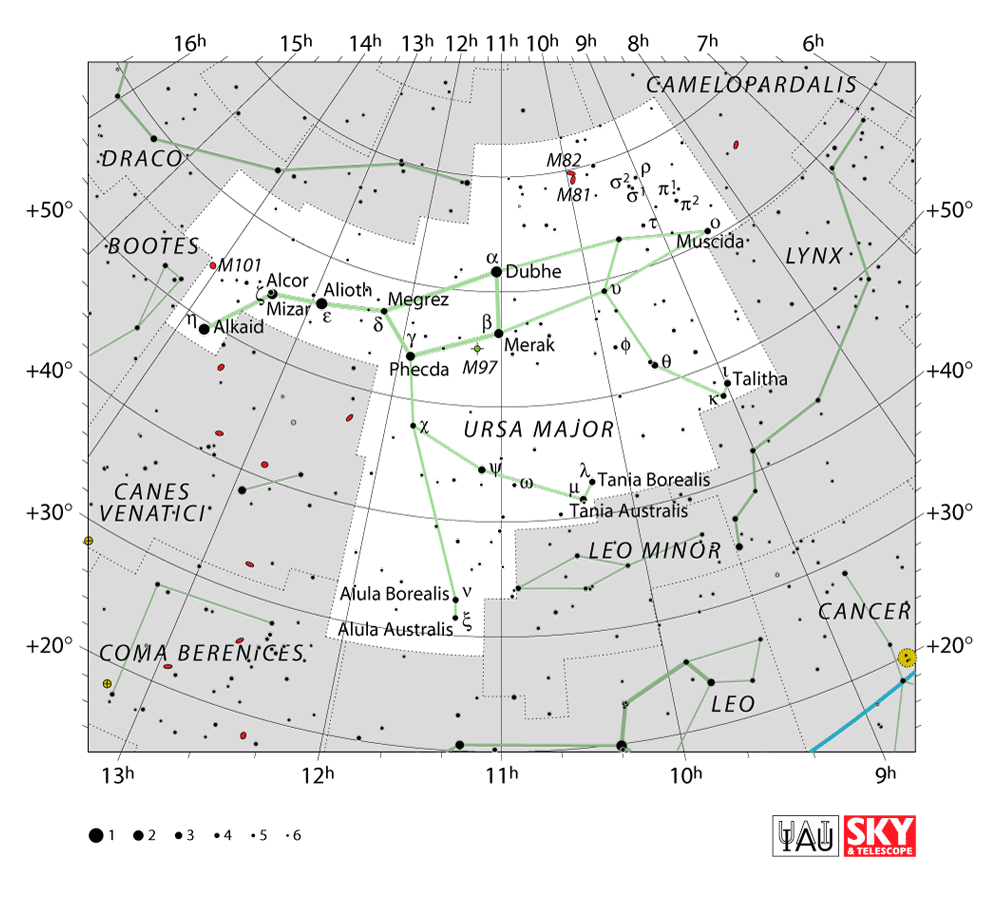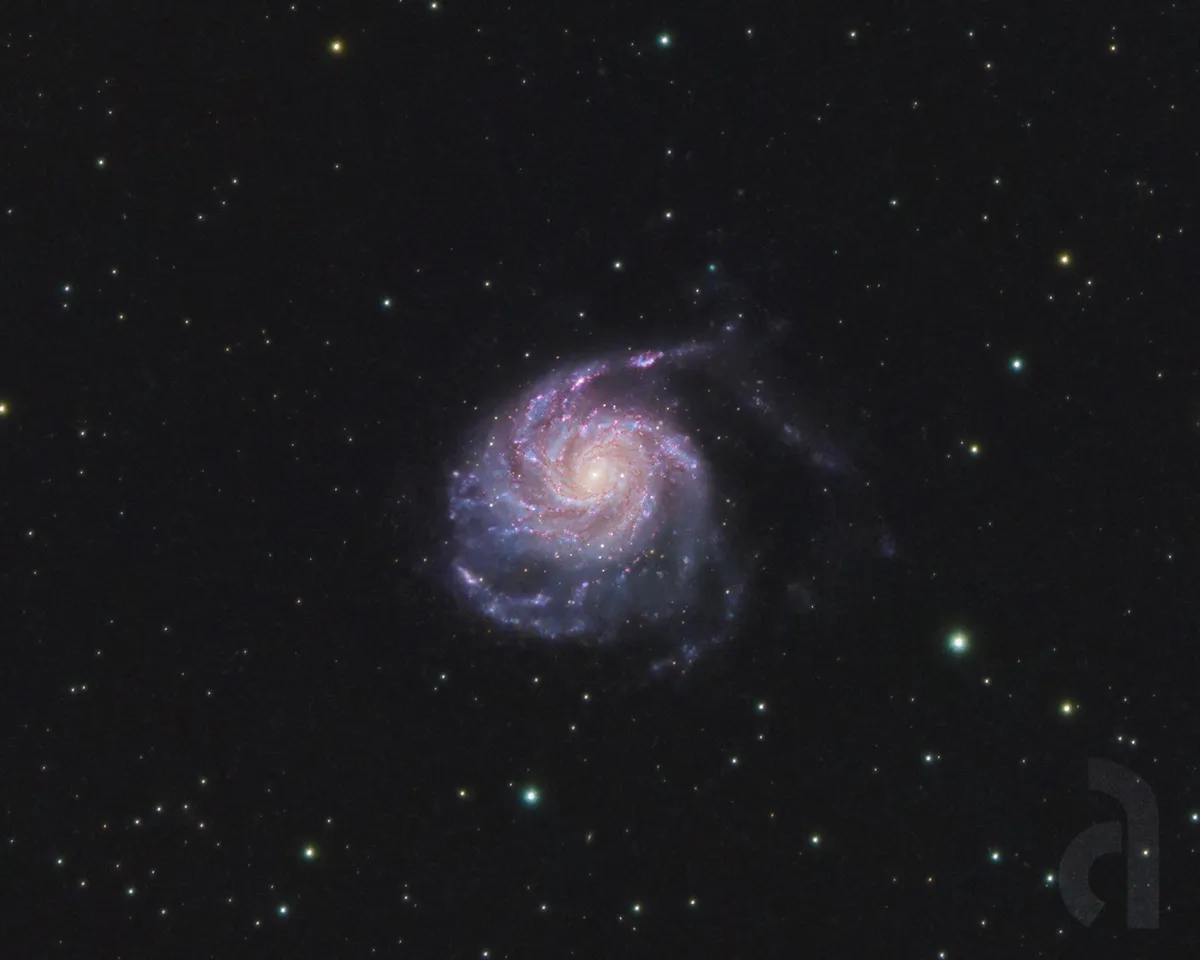The Pinwheel Galaxy
Pinwheel Galaxy (M101) is a large spiral galaxy that we see face-on. While somewhat difficult to see visually, it is an easy target for astrophotographers at many focal lengths. A feature of this galaxy is its large amounts of ionized hydroge giving off bright patches of red light.
The giant spiral disk of stars, dust and gas is nearly twice the size of the Milky Way. It is estimated to contain at least a trillion stars. It can be spotted through a small telescope and is most easily observed during the spring and summer. Its apparent size also makes it one of the largest and brightest galaxies in the sky.
Specifications:
Designation: M101
Known As: The Pinwheel Galaxy
Apparent Size: 29′ x 27′
Magnitude (lower is brighter): 7.9
Distance from Earth: 21M LY
Two Hour Imaging Using a Bicolor Filter
The image above was a combination of Bortle 1 and Bortle 6 skies using broadband filters. I composited images from my Apertura telescope for a wider composition with images from a larger Chilean telescope to help with the galaxy details.
EQUIPMENT
Telescope: Apertura 60EDR,
Planewave CDK24
Mount: Skywatcher EQ6R-Pro,
Mathis MI-1000/1250
Camera: ZWO ASI533MC Pro,
FLI PL 9000
Guiding: ZWO ASI120MM Mini
Brain: ZWO ASIair Pro
Filters: RGB, UV/IR Cut
ACQUISITION
Integration Time: 6.33 hours
RGB: 52 x 300″, 12 x 600″
BIN: 1×1
Gain: 110
Temperature: -10° C
Bortle Scale: 2/6
CALIBRATION
Darks: 10
Flats: 30
Dark Flats: 30
Offset/Bias: 30
The Ursa Major Constellation
Ursa Major (Great Bear) is primarily known from the asterism of its main seven stars, the “Big Dipper”, among other names. In particular, the Big Dipper’s stellar configuration mimics the shape of the “Little Dipper.” Two of its stars, named Dubhe and Merak can be used as the navigational pointer towards Polaris in the neighboring Ursa Minor constellation.
Several bright galaxies are found in Ursa Major, including the Bode Galaxy, Cigar Galaxy, and Pinwheel. The spiral galaxies M108 and M109 are also found in this constellation. The small but bright planetary nebula Owl Nebula can be found along the bottom of the bowl of the Big Dipper.

Available Merchandise
Use the Order Form to request prints or merchandise. (I accept Venmo or CashApp.)
*General information regarding constellations, galaxies, nebulae, and planets have been sourced from: AstroBackyard, VisibleDark, Wikipedia, EarthSky, and NASA.

